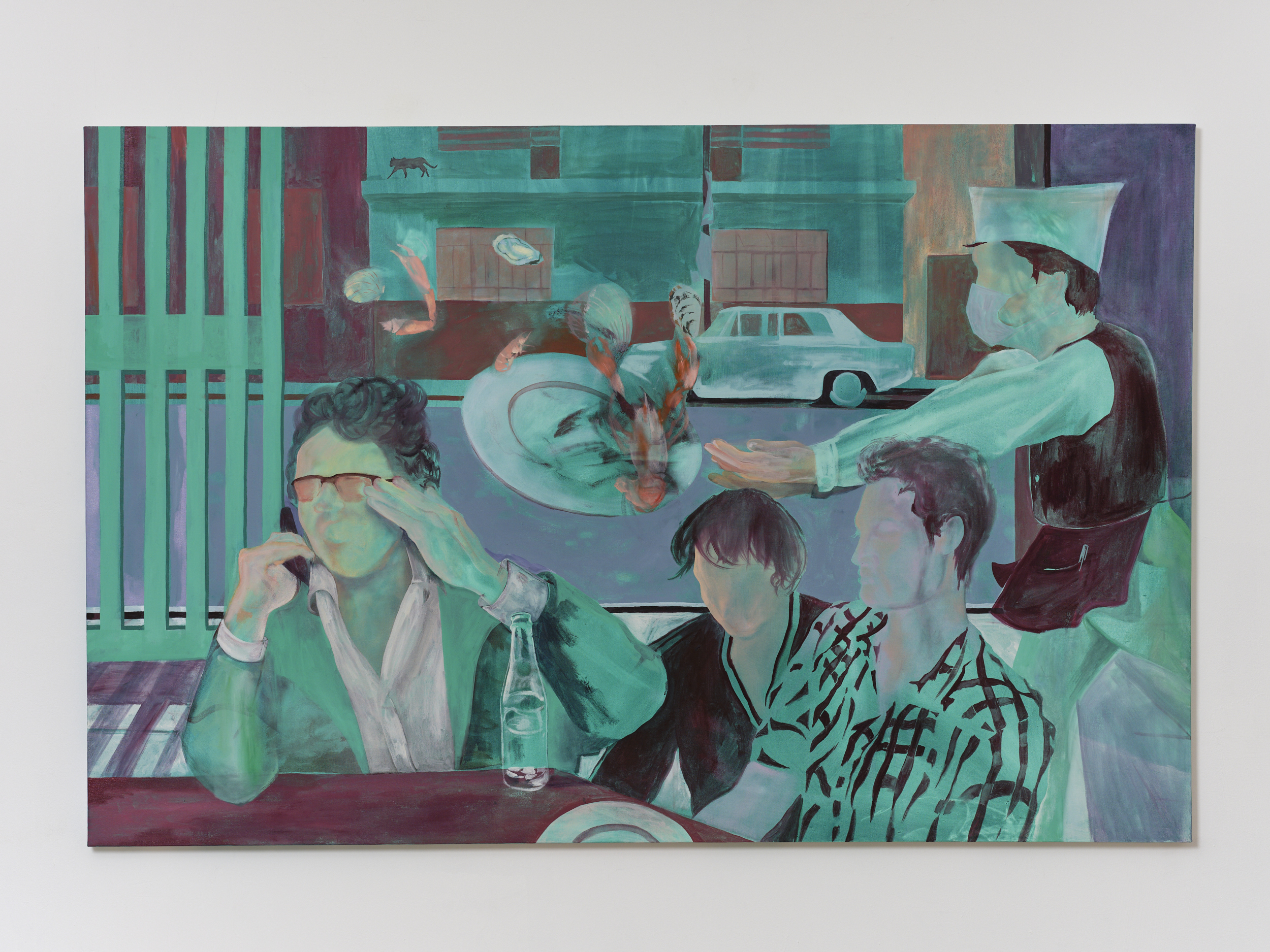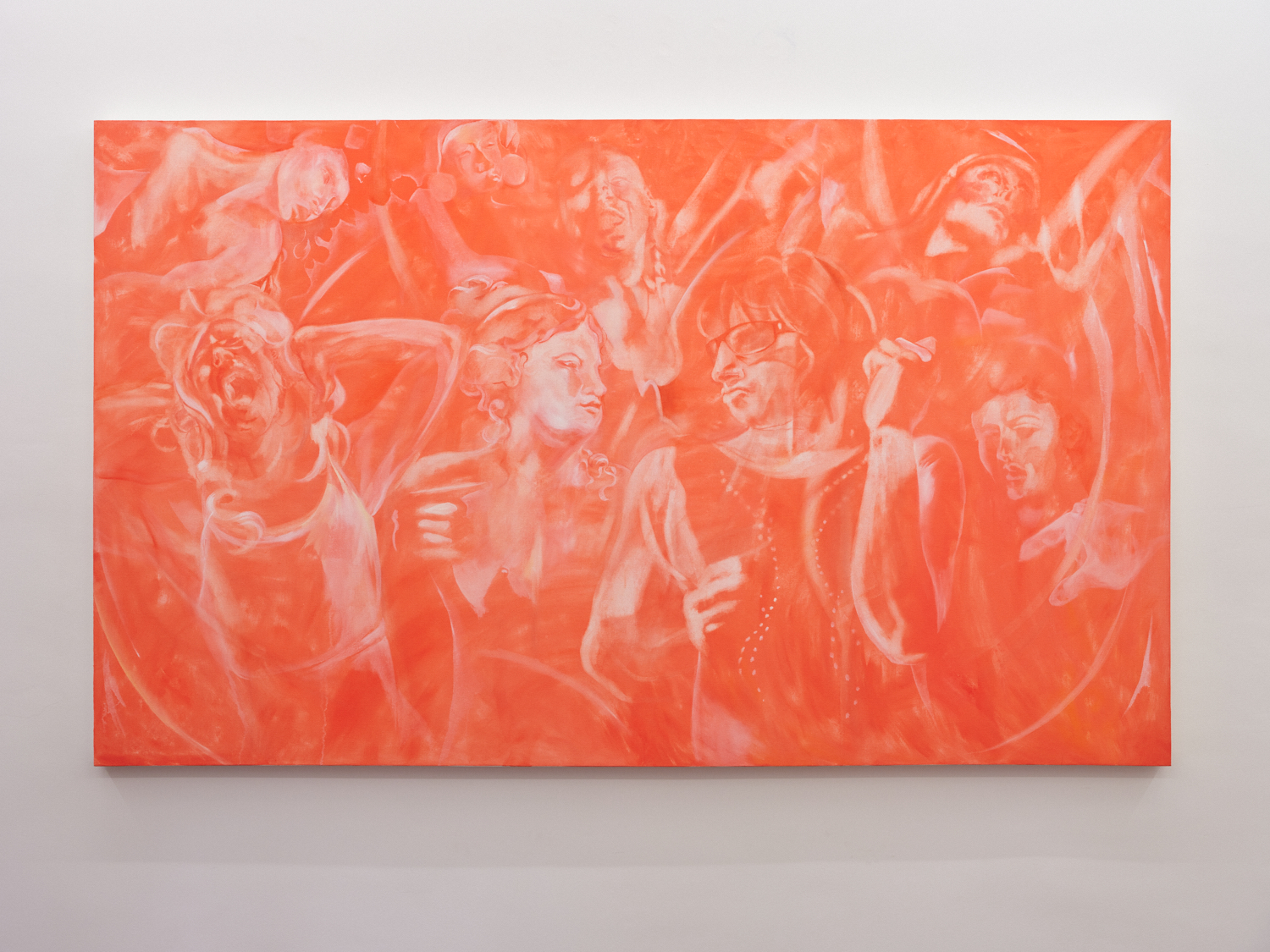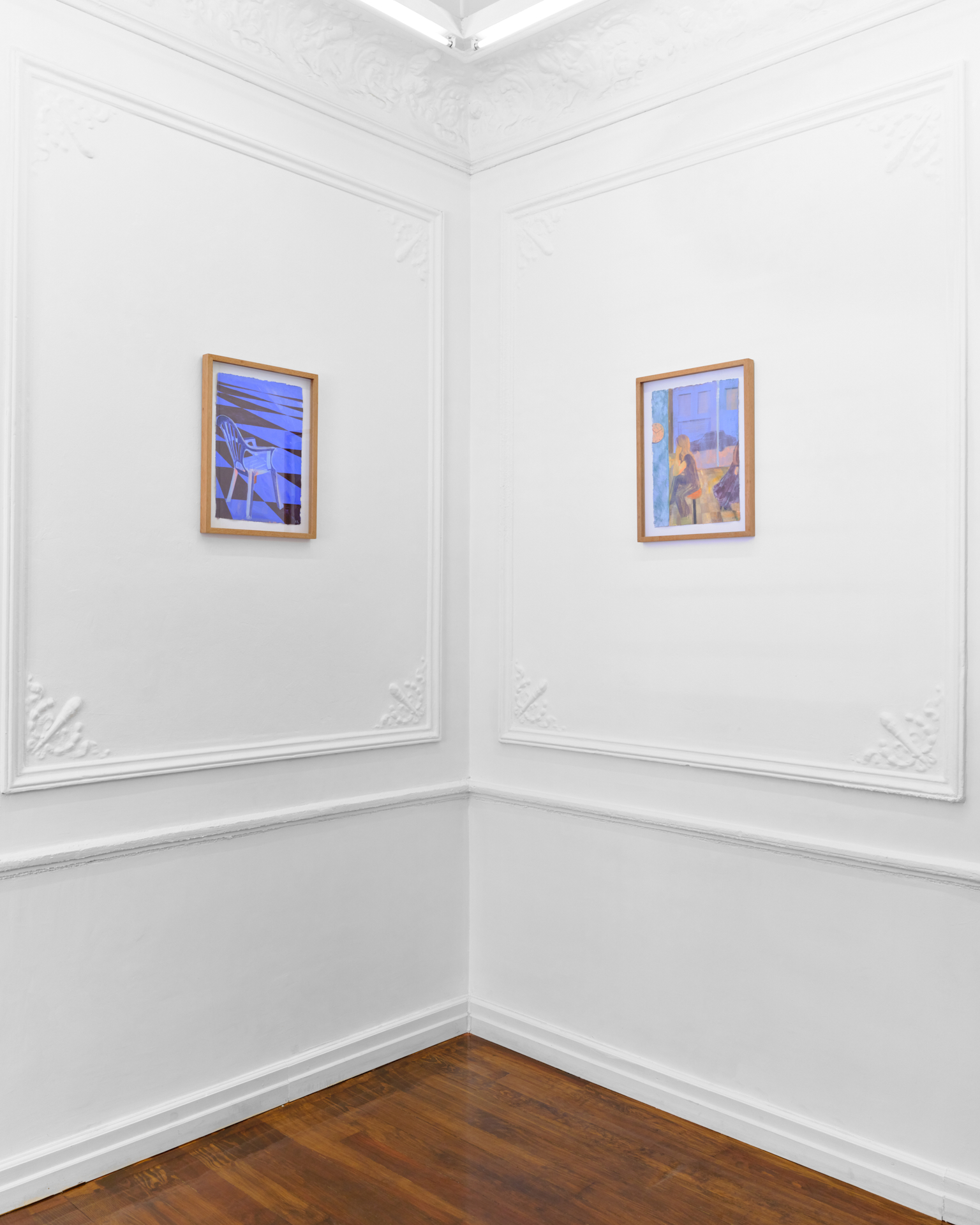Andrea Villalón & Kitty Rice: Fractured Solitudes
December 12 - January 25, 2025
JO-HS CDMX
JO-HS Gallery is thrilled to present Kitty Rice and Andrea Villalón in its second exhibition at the new space located at Puebla 114, Roma Norte.
Inspired by the iconic book The Labyrinth of Solitude by Mexican philosopher and poet Octavio Paz; Kitty Rice and Andrea Villalón introduce their hybrid exhibition titled Fractured Solitudes. Their homage to Paz begins with the divergence of their own lives. Villalón—born in Michoacán—experiences Paz’s nostalgia from England. She reconnects with her Mexican identity through memories of her past: growing up in Uruapan and later studying in Mexico City. Villalón’s imagined visions of cempasúchil flowers, canoes, and the colorful, mystical island of Janitzio—an autumnal epicenter marking the passage of the departed to the underworld and a symbol of pre-Hispanic syncretism with Christianity—embody the nostalgia that Paz so profoundly evokes: a world entangled in the search for what was and the confusion with what is. According to Paz, history and our collective yearning for a mythical dream define what it means to be Mexican. More so, history is what we are.
Selected works




Paz reflected that the fiestas, for the solitary Mexican, serve as an outward expression, a suspension of morality where rules dissolve, hierarchies fade, and proximity to death becomes playful. People cry, shout, laugh, play, and even kill. In the festival, as Paz observed, the Mexican transcends and encounters otherness. As a Mexican woman, Villalón identifies with the femininity Paz describes in his nostalgic depiction of Janitzio: “Woman embodies the will of life, which is by essence impersonal, and in this fact lies her inability to have a personal life.” For Villalón, this affirmation reflects how her life abroad, full and vibrant, confronts her with an alterity. Although at times she experiences loneliness, that same alterity frees her from absolute solitude and deepens her yearning for a return to her roots in Mexico. Villalón navigates a labyrinth at the periphery, while Paz, even in the 21st century, continues to shelter us with his timeless insights.
Kitty Rice, by contrast, approaches The Labyrinth of Solitude from a different perspective. From her position of transcendent otherness, she connects with the Mexican experience in her own way. Rice navigates her solitude through a globalist, Londoner lens, inhabiting the ambiguity of desiring to identify as English while dissociating from much of her country’s identity in a sprawling, multicultural metropolis. After a long process of observational drawing and attention to architectural spaces, Rice delves into a key concept in Paz’s philosophy: Don Nadie (Mr. Nobody). Paz describes the Mexican as being caught in ambiguity, balancing between being and not being. As he points out, in Mexican custom, when someone startled at home asks, “Who’s there?” it is customary to reply, “It’s nobody, it’s me.” This reflects ninguneo—the act of reducing oneself or others to nothingness. Don Nadie, the one who reduces, lives among us: in cantinas, banks, ruins, and the heart of Mexico City.
Dreamlike, Kitty and Andrea oscillate between the chaos and order of the constant Mexican condition, present in both the cantina and the heart of Pátzcuaro. The festival acts as the bridge between the two painters: one approaching the nostalgia of deep Mexico, and the other discovering transcendence in a condition that disarms and connects her to what she describes as Mexico’s Dionysian essence. Kitty perceives Mexico through a dialogue with art history’s representations, celebrating animality while dismantling the rigid order imposed on the periphery of the labyrinth, ultimately freeing us from control.
Request a preview
Installation views






Artist’s Bio:
Andrea Villalón :
Andrea Villalón is a multi-disciplinary visual artist known for her introspective and autobiographical themes in painting, photography, and stained glass. Born in Uruapan, Michoacán, her work delves into personal identity and introspection through the use of symbolic elements and the documentation of everyday experiences. From ordinary routines like meals to haircuts, self-inflicted cigarette burns and her beloved cats, pills, books, and relationships to personal belongings and people, Andrea explores the complexities of modern womanhood. Her art encompasses emotions and concerns such as temporal progression, dreams, the modern world, memory, femininity, solitude, the chthonic, and aging, all stemming from an existential worldview emphasizing the importance of an authentic connection to the world. Andrea has exhibited her work at art fairs including Nada NYC, Enter Art Fair, and Material. After having two solo shows in Mexico City and being previously represented by Machete Gallery, Andrea Villalón is now under the representation of Brigade in Europe, where she had her debut solo show in Copenhagen in 2020. Currently based in London, Andrea advocates for self-exploration and self-understanding as a path to simplicity in life.
Kitty Rice:
Kitty Rice is a British painter, based in South London. She recently changed her focus to painting after completing a post-graduate scholarship at The Royal Drawing School in 2022. Her practice is led by drawing and she is interested in referencing art history and the use of the picture plane through time. After time spent drawing observationally, gathering an archive of images, she approaches the canvas without reference, forming intuitive ecosystems in the paint which the compositions then appear from. Through her interest in architectural forms, there is an unavoidable sense of place which she locates these imagined characters within. This then begins to form tension shifts and narrative between the interacting figures. She is also interested in the absence of the human form within figurative compositions, considering how objects are often anthropomorphised through the viewer’s interaction with them. She has been interested in some central themes from The Labyrinth of Solitude like separation, independence and interaction.The space of the cantina in Mexican culture forms the backdrop for these filmic scenes.
